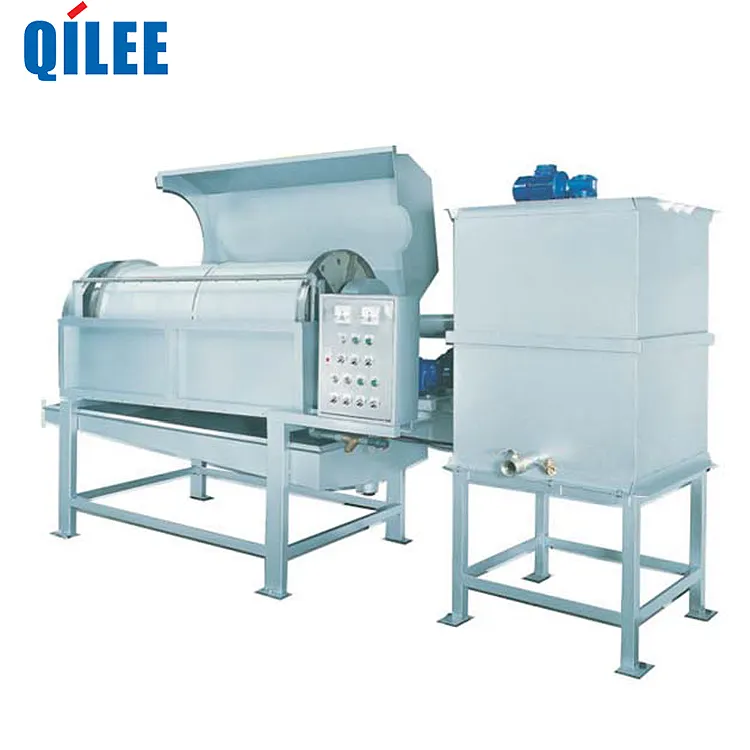Concentrador de lodosis a device that is used to increase the solids content of wastewater sludge by removing a portion of the liquid component. This process helps to reduce the volume of sludge and make it easier to handle, transport, and treat.
How does a Sludge Thickener work?
Concentrador de lodosworks by using gravity or a mechanical process to separate the liquid and solids components of wastewater sludge. The sludge is fed into the thickener, and the solids settle to the bottom of the tank, where they are concentrated. The liquid component overflows the tank and is either returned to the treatment process or sent to further treatment.
Concentrador de lodosworks by using gravity or a mechanical process to separate the liquid and solids components of wastewater sludge. The sludge is fed into the thickener, and the solids settle to the bottom of the tank, where they are concentrated. The liquid component overflows the tank and is either returned to the treatment process or sent to further treatment.
En el concentrador de gravedad, el lodo se envía a la piscina y se precipita bajo la acción de la gravedad. Los sólidos se depositan hasta el Fondo y forman un lecho de lodos, mientras que el líquido se desborda del tanque. La altura del lecho de lodos se puede ajustar controlando la velocidad de flujo del lodo en el tanque.
En los concentradores mecánicos, los lodos se envían a la piscina y se mezclan con coagulantes para facilitar el asentamiento de sólidos. El tambor giratorio o la correa se utilizan para separar la composición líquida y sólida del lodo. Los sólidos se concentran en tambores o cinturones, mientras que el líquido desborda el tanque.
Independientemente del tipo de espesante utilizado, su objetivo es aumentar el contenido sólido del lodo y reducir el volumen de líquido. Esto ayuda a facilitar el tratamiento, el transporte y el tratamiento de los lodos.
Why is a Sludge Thickener important in wastewater treatment?
Concentrador de lodos is important in wastewater treatment because it helps to reduce the volume of sludge produced, which in turn reduces the cost and effort required to handle, transport, and treat the sludge. Additionally, by removing a portion of the liquid component, the solids content of the sludge is increased, which makes it easier to handle and treat. This is important because it helps to improve the overall efficiency and effectiveness of the wastewater treatment process.
Los concentradores de lodos son importantes en el tratamiento de aguas residuales por varias razones:
Reducir el volumen de lodos:By removing a portion of the liquid component, the solids content of the sludge is increased, reducing its volume. This makes it easier and more cost-effective to handle, transport, and store the sludge.
Mejorar la eficiencia del tratamiento: By increasing the solids content of the sludge, the thickening process helps to improve the efficiency of subsequent treatment processes, such as anaerobic digestion or dewatering.
Ahorro de costos de procesamiento:Reducing the volume of sludge produced and improving the efficiency of subsequent treatment processes helps to reduce the overall cost of wastewater treatment.
Ahorro de agua:The removal of the liquid component from the sludge helps to conserve water, as less water is required to transport and treat the sludge.
Reducir el impacto ambiental: By reducing the volume of sludge produced and conserving water, the use of a sludge thickener helps to reduce the environmental impact of wastewater treatment.
En resumen, el uso de concentradores de lodos es importante en el tratamiento de aguas residuales, ya que ayuda a reducir el volumen de lodos, mejorar la eficiencia del proceso de tratamiento, ahorrar costos de tratamiento, ahorrar agua y reducir el impacto ambiental del tratamiento de aguas residuales.

 Línea directa de servicios:
Línea directa de servicios:

 English
English
 ภาษาไทย
ภาษาไทย
 عربي ،
عربي ،
 русский язык
русский язык
 Portugiesisch
Portugiesisch
 Vietnamese
Vietnamese


